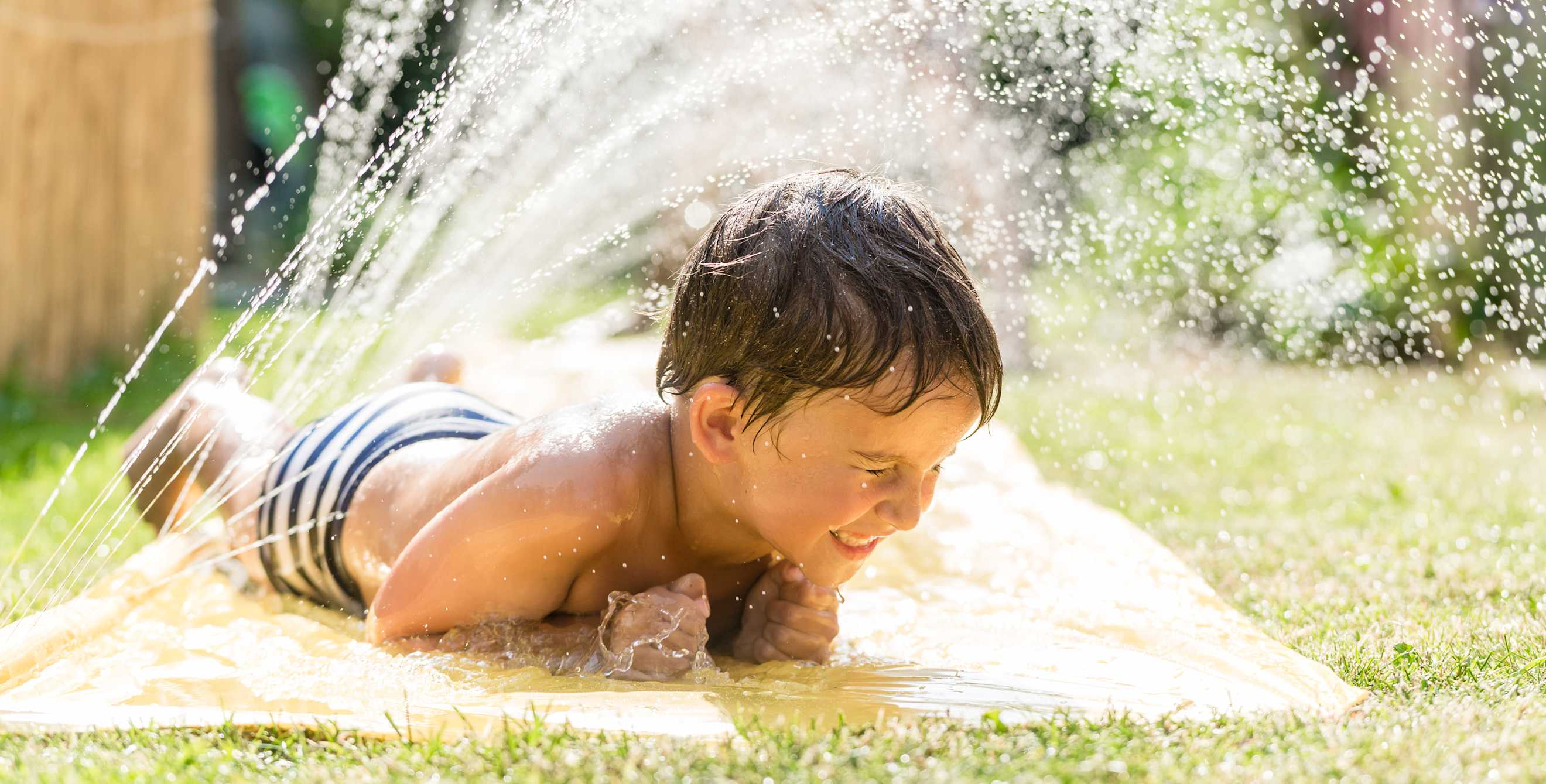
How to Stay Safe During Extreme Heat
Prepare your family, pets, and community for dangerous temperatures.

With a massive heatwave affecting 91 million Americans in July, 2023 is proving to be the hottest summer on record. Temperatures topped 110 degrees for 19 days in a row (and counting) in Phoenix, and several cities across the U.S. have set new daily records for extreme temps as El Niño brings warmer air to the north.
Extreme heat events are “expected to become more common, more severe, and longer-lasting,” according to the Environmental Protection Agency (EPA). And it’s not just a concern during the summer months, or in typically blistering areas: The Pacific Northwest faced a heat wave with temperatures at least 22 degrees above average in May.
These high temps and extreme heat events are more than just uncomfortable—they can lead to heat-related illnesses and death.
“Advanced preparedness is absolutely key in ensuring that folks can handle those extreme weather events, and that they know exactly what to do to keep their property and their families safe,” says Stephanie Fox, media relations lead for the American Red Cross.
The steps you take now will help keep you—and your pets—safe and comfortable in the future, even as temperatures spike. Here’s what you need to know.
Stay aware.
Regularly check the forecast so heat isn’t a surprise, or get local SMS alerts on your phone by going to your phone's notification settings and turning on Emergency and Public Safety alerts.
An excessive heat outlook is declared three to five days before high temperatures arrive. They’re issued to “encourage folks to start making their preparations to keep weather aware and to know that there is a potential for extreme heat to occur in their area,” Fox says.
A heat watch is issued when the risk of an extreme heat event in the next 24 to 72 hours has increased, but its occurrence and timing is still uncertain, Fox says. A heat warning or advisory happens when the weather hits. At this point, “folks should have already been prepared... so they’re ready to hunker down and handle that extreme weather,” she says.
Stock your emergency kits.
It’s wise to have an emergency kit with essential supplies (think: food, water, prescription meds, and first aid kit) in both your car and your home.
Make it a habit to check in on your emergency kits annually. After all, medications can expire. And in a true emergency situation, you wouldn’t want to discover that the last of your bottled water was slurped down after soccer practice.

Prepare your home for heat.
If summer is nearly upon you, there are some speedier, short-term actions you can take in your home:
- Cover your windows. Use drapes or shades to stop the sun’s rays from entering. If you don’t have window coverings, Fox suggests putting aluminum foil on windows to reflect the heat away from your home, instead of allowing it in.
- Put in window air conditioners. If you do not have central air, add window units. Check they work properly each spring, and if your window AC unit is old or damaged, retire it in favor of a newer one, which will work more efficiently and keep your energy costs lower, per the EPA.
- Add weather stripping. Apply it around windows and doors to keep hot air out and air conditioned air in.
- Open the windows. If you do not have air conditioning, open the windows for breezes and head to the lowest floor, per the San Francisco Department of Public Health. (Remember, heat rises.)
These long-term strategies can help to make your home more hospitable in higher temperatures:
- Update your roof. A green roof—aka a rooftop garden—or a cool roof, made with materials that reflect sunlight and heat away from your home, will both help reduce the temperature on the surface and inside your home, according to the EPA.
- Add insulation. This will help keep your home cooler and save on cooling costs.
- Update your landscaping. Planting trees or adding shade structures can help provide shade by your home. Just be sure to choose foliage that can tolerate high temperatures and low water.
Know your back-up location.
Before heat hits, know where you can go if your preparation measures aren’t sufficient, or there’s a power outage that renders your home unsafe.
That might mean staying with friends and family, going to a hotel, or taking advantage of local cooling centers. A visit to a big box store, library, or movie theater can also be a good way to get access to air conditioned air.
Check on others.
Part of having a plan is thinking about others in your community. Children and the elderly are at higher risk. So along with preparing yourself and your loved ones, check in on vulnerable community members—make sure they have the necessary supplies on hand, Fox says.

What to do When Heat Hits
If you’re driving during high heat, bring along plenty of water and pay attention to signs that your vehicle is overheating. If your car breaks down, consider using the air conditioning in phases so you don’t use too much gas or battery.
“Your vehicle is going to heat much quicker than the outside environment,” Fox notes. It’s better to stay outside of the car if you can’t run the AC. Be careful entering a vehicle on a hot day, since you can burn yourself on plastic or metal, she says. Never, ever leave a child inside the car alone—even when windows are open, cars get extremely hot very fast.
At home and in your day-to-day routine, follow these strategies to keep cool—and safe—as the temperature rises:
- Avoid the outdoors. Limit your exposure to heat by staying inside your home, Fox says. If you do need to go outside, try to do so during cooler parts of the day and take it slow and easy. Look for shady areas, wear a hat, and apply sunscreen.
- Drink a lot of water. You need to stay hydrated to help avoid heat-related illnesses, Fox says. Don’t wait until you’re thirsty to guzzle water.
- Pick your outfit wisely. Wear loose and lightly colored clothing to help keep yourself cool.
- Skip the oven. Turning it on will raise the temperature in your living space.
- Seek out the cool. Try to stay in the coolest area of your home. It can be helpful to take a cool shower or bath. If it’s really hot in your home (over 95 degrees Fahrenheit), skip the fan, since it could make your body hotter, rather than cooler.
- Know the signs of heat-related illnesses. Dizziness, heavy sweating, and a racing pulse are all signs of trouble. Take steps to cool down, and seek help—heat stroke is an emergency situation that merits a visit to the emergency room or calling a doctor.

Make a plan for pets.
People often don’t consider pets as they’re preparing for severe weather, Fox notes. “You want to make sure you're bringing your pets inside and keeping them in a cool location as frequently as possible,” she says. If pets do go outside, make sure they have access to shade and frequently refreshed cool water.
Follow these pet safety tips when the temperature rises:
- Look for cooling locations that are pet-friendly if you anticipate needing to use one.
- Don’t leave pets in parked cars. Even with a cracked window, cars get deadly hot very quickly.
- Time walks for cooler times of the day, such as the morning or after dusk. Look for shadier areas for walks, and if the temperatures are hot, keep walks and playtime outside brief and bring along water.
- Avoid hot surfaces, such as asphalt, which can be hard on your pet’s paws. Grass is a better option.
- Make sure pets have access to plenty of cool, fresh water.
- Know the signs of heat-related distress, such as excessive panting, drooling, or lethargy. Talk to your veterinarian to get more details on signs of problems, and advice on how to care for your pet in hot temperatures. For instance, some pets can benefit from a different haircut or grooming routine during the summertime.